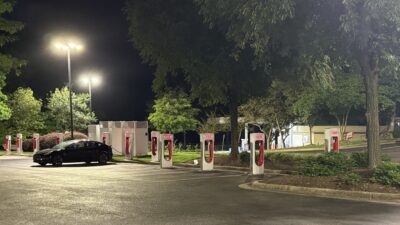A challenge in designing a substation is to time synchronize all connected devices, which requires proper design.

A well-known challenge in designing a substation is to time synchronize all connected devices, which requires proper design. A closely related challenge, and the topic of next week’s blog, arises in understanding how vendors use time synchronization signals and what accuracy and resolution they provide in their devices. Both of these topics are the subject of current standards efforts.
In the design of a large industrial substation, particularly one that interfaces with an electric utility at transmission voltage levels, it’s often necessary to know the precise time and sequence of events. That’s critical to determining whether protection and command-and-control elements in the industrial substation functioned properly.
"Sequential event reporting" allows the engineer or the substation owner to evaluate whether all protection events occurred as designed. If events didn’t occur as expected, sequential time reporting provides the basis for a design or engineering review. Thus the consulting specifying engineer has to determine the appropriate selection and distribution of a time source.
Different time sources and distribution methods are available, and they all have to do with the degree of accuracy needed in the system. So it’s important for the consulting specifying engineer to understand the limitations of each of those systems, and to determine whether they provide the degree of accuracy needed in a specific application.
For a substation interconnected to the utility at a distribution level, accuracy in the range of 10 to 20 milliseconds may be sufficient. Systems are available that can provide this accuracy through a local, master clock provided at the industrial facility, or through the utility via protocols, such as IEEE Standard 1815 or simple network time protocol (SNMP). Simply connecting intelligent electronic devices (IEDs) with IEEE 1815 or SNMP will provide time synchronization at that level.
When time synchronization requires a resolution of, say, +/-1 millisecond, typically an external time source is needed. That external time source could be either a GPS receiver or a WWV receiver. GPS uses the very accurate time signals from a global satellite system, and WWV broadcasts a radio signal sent from an atomic time clock source maintained by the National Institute for Science and Technology (NIST) in Fort Collins, Colo. (Background on the WWV system is found here.)
Because it would be cost-prohibitive to equip every substation IED with its own receiver for either GPS or WWV, the consulting specifying engineer must properly design the distribution of the time source signal so it doesn’t degrade and lose its resolution. One common mechanism for distributing the signal is a protocol known as IRIG-B, or Inter-Range Guidance and Instrumentation. It’s a standard first designed for the military to correlate time data when testing weapon performance.
The third level of accuracy is in the microsecond range. Typically, this range of resolution is not required at the industrial level, with the exception of facilities injecting large amounts of power back into the grid. In that case, the design of the interface to, say, a large wind power plant or a co-generator-any facility that can introduce megawatts (versus kilowatts) into the transmission network-increasingly includes higher accuracy devices such as synchrophasors.
Synchrophasors require a higher degree of accuracy in the time source clock. So, again, the consulting specifying engineer needs to look carefully at each device he’s specifying to ensure that degree of accuracy and also at the design of the physical system that distributes that signal to all the devices that need it. Time sources in this range of accuracy will need to comply with IEEE 1588, Standard for a Precision Clock Synchronization Protocol for Networked Measurement and Control Systems, and IEEE C37.238, Standard Profile for Use of IEEE Std. 1588 Precision Time Protocol in Power System Applications.
The proper distribution of time signals at high resolution begins with hard-wired connections and the proper cables, the proper wiring practices, for all the physical interfaces to the devices. For network based distribution systems, the design/specification of the network, including switches, routers, and configuration of these devices will also need careful consideration. For signals distributed wirelessly, the consulting specifying engineer needs to look carefully at the specifications on the receivers, so that he does not design a distribution system for the signal that actually degrades the signal.
Sam Sciacca is an active senior member in the IEEE and the International Electrotechnical Commission (IEC) in the area of utility automation. He has more than 25 years of experience in the domestic and international electrical utility industries. Sciacca serves as the chair of two IEEE working groups that focus on cyber security for electric utilities: the Substations Working Group C1 (P1686) and the Power System Relay Committee Working Group H13 (PC37.240). Sciacca also is president of SCS Consulting.



